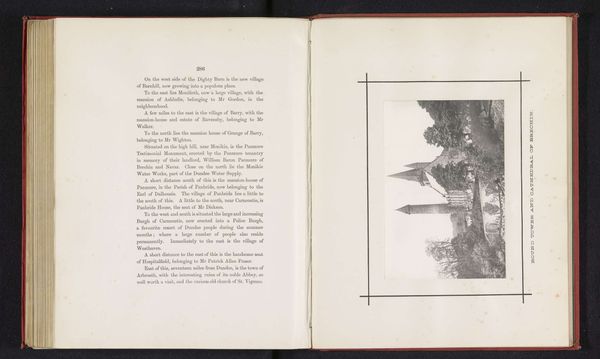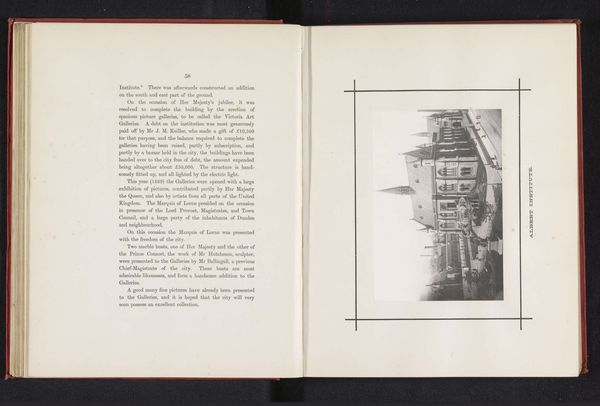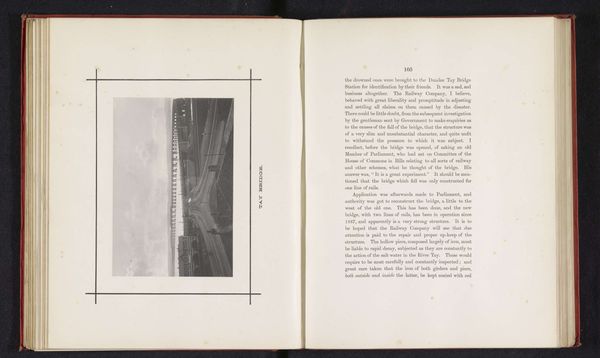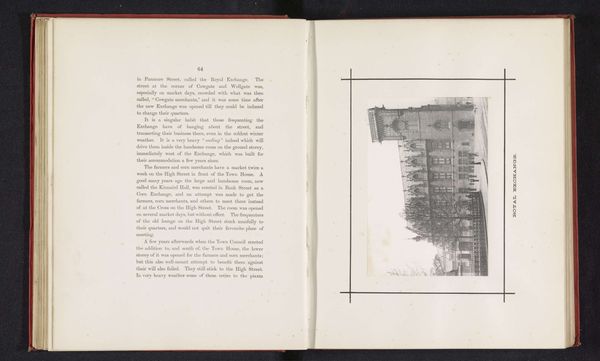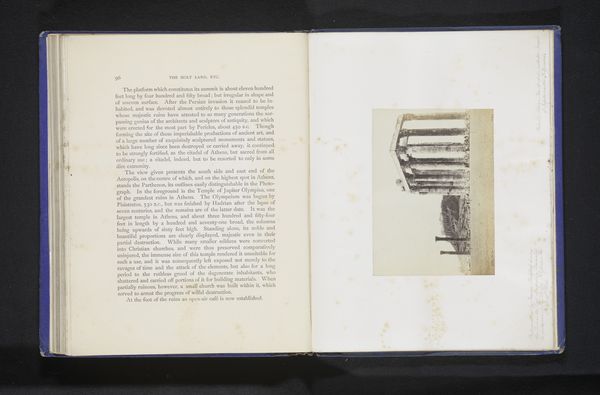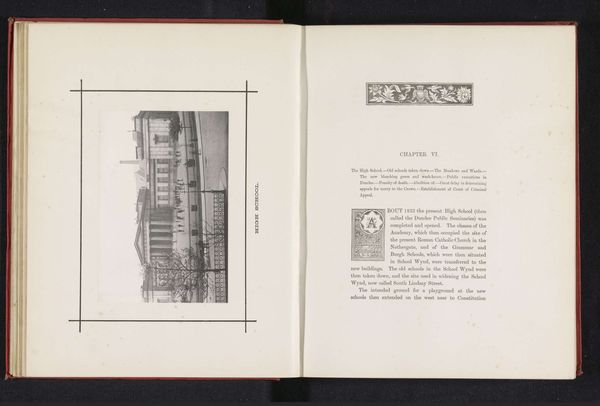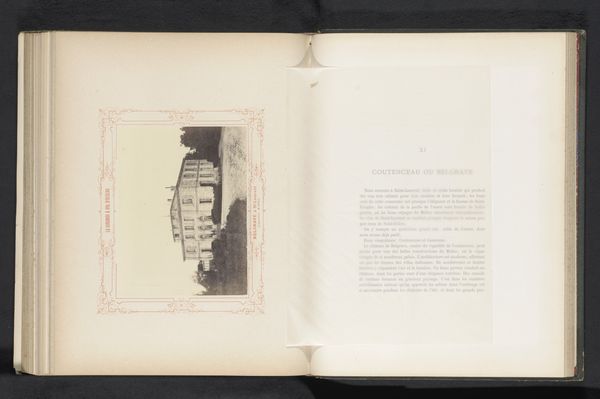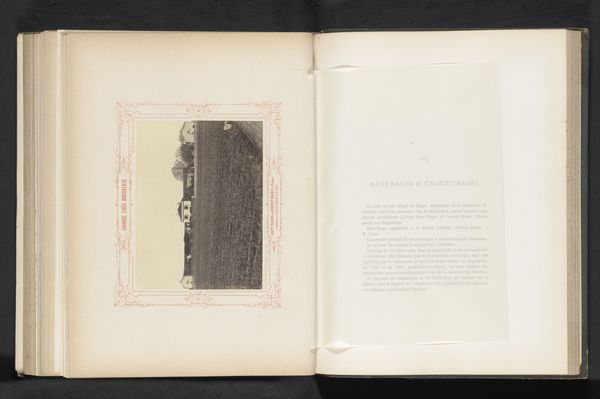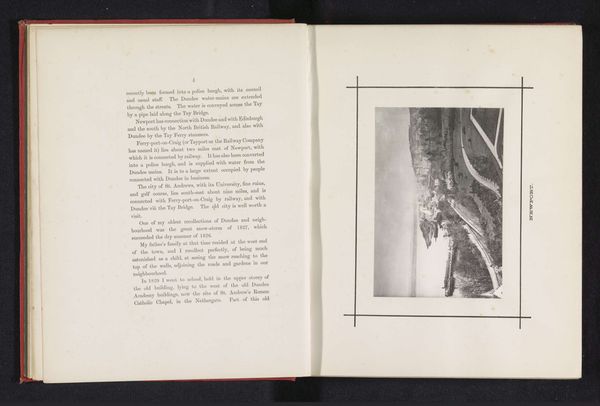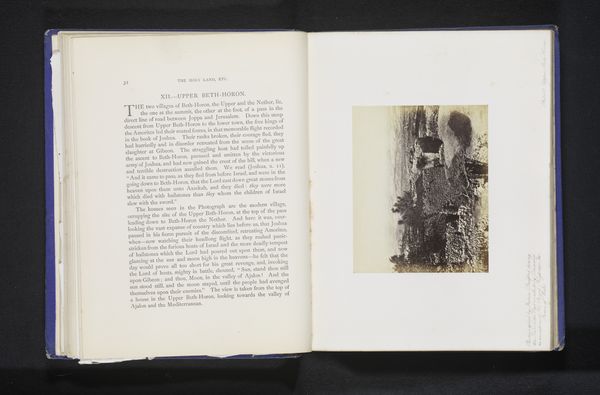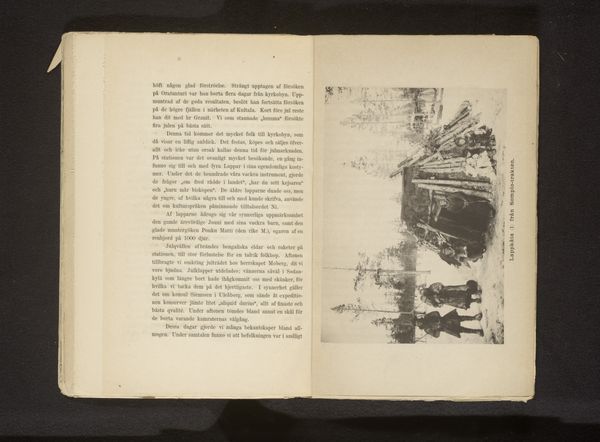
print, photography
#
aged paper
#
medieval
# print
#
landscape
#
house
#
photography
#
personal sketchbook
#
monochrome
Dimensions: height 102 mm, width 150 mm
Copyright: Rijks Museum: Open Domain
Editor: So, we’re looking at "Gezicht op ruïne van de abdij van Arbroath," a print by Valentine & Sons, created before 1890. The monochrome image feels so melancholic. The architectural ruins evoke such a sense of the passage of time. What catches your eye about this work? Curator: Well, it's interesting to consider how a 19th-century print like this actively shapes our understanding of medieval ruins. Think about the popular imagery of ruined abbeys in that era – these weren't just historical sites; they represented power, faith, and the picturesque decline of empire. What kind of audience was consuming this image, and how does it cater to their tastes and beliefs? Editor: I hadn’t considered the "picturesque decline." Do you mean people were actively romanticizing decay? Curator: Precisely! Photography and prints like this played a vital role. The Valentine & Sons company mass-produced these images, distributing a specific aesthetic and historical narrative. Were they striving for accuracy or creating a specific mood, a palatable vision of Scottish heritage for a paying public? It is the image of the ruin, not necessarily the ruin itself, that has cultural value. Editor: So it’s almost like they're curating the past through these prints? Selectively highlighting aspects to fit a desired narrative? Curator: Exactly. It prompts us to question the power structures inherent in image-making and historical representation, especially when it comes to widely distributed media. It wasn’t simply capturing a view; it was actively constructing one. Editor: That really shifts my perspective. I thought I was looking at a record, but it's actually a constructed interpretation. Curator: And recognizing that construction allows us to think critically about how history is presented and consumed even today.
Comments
No comments
Be the first to comment and join the conversation on the ultimate creative platform.

